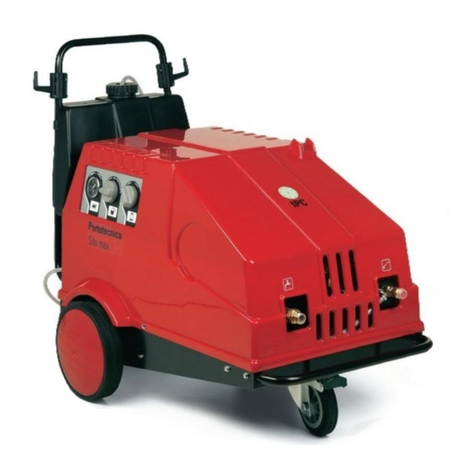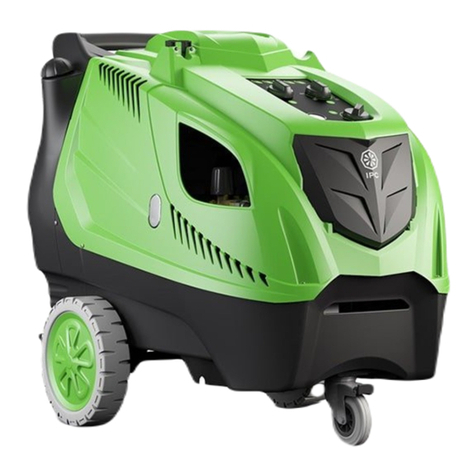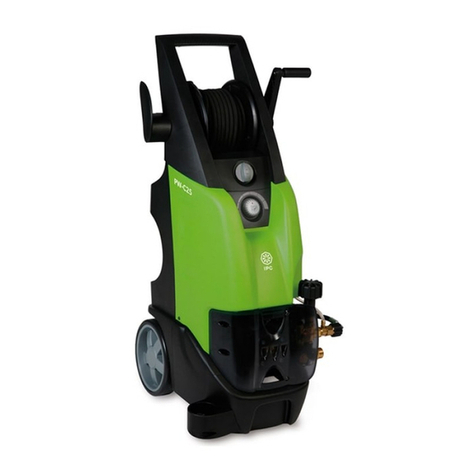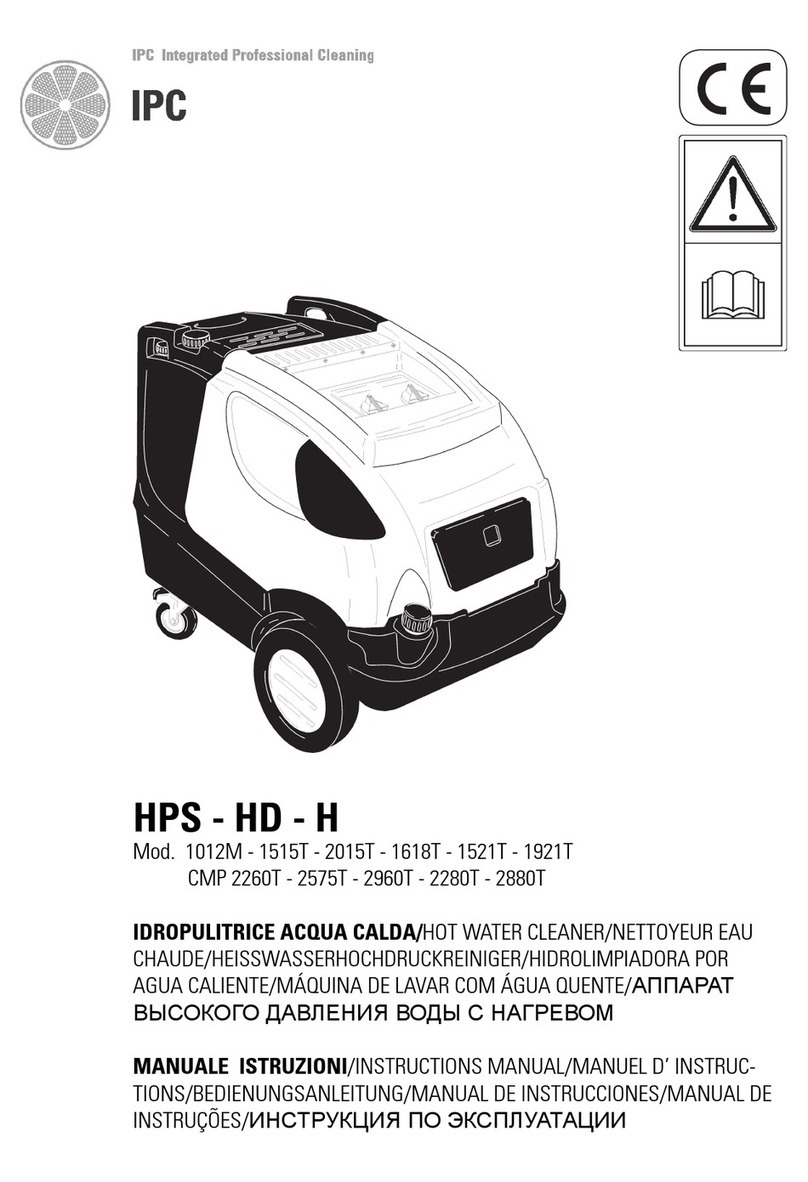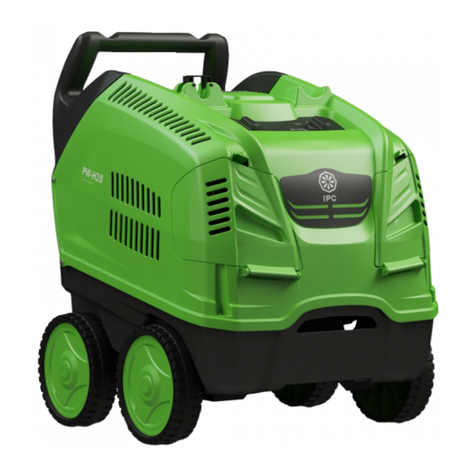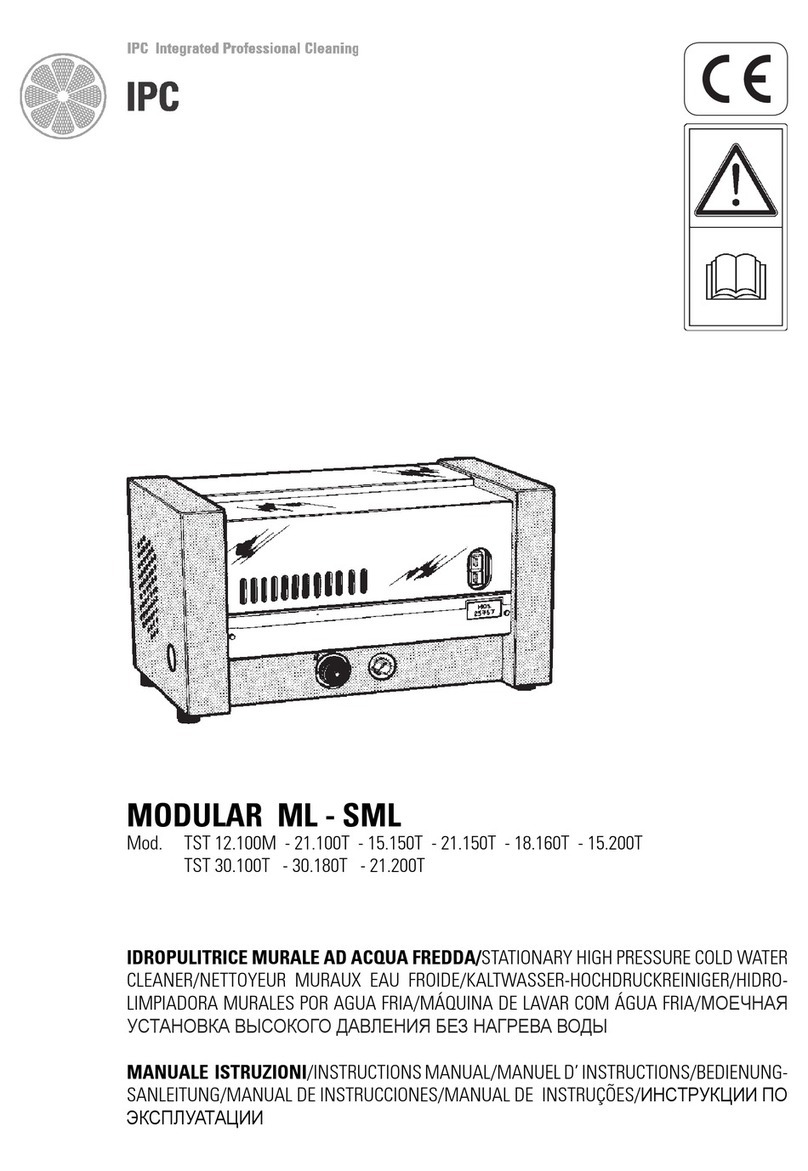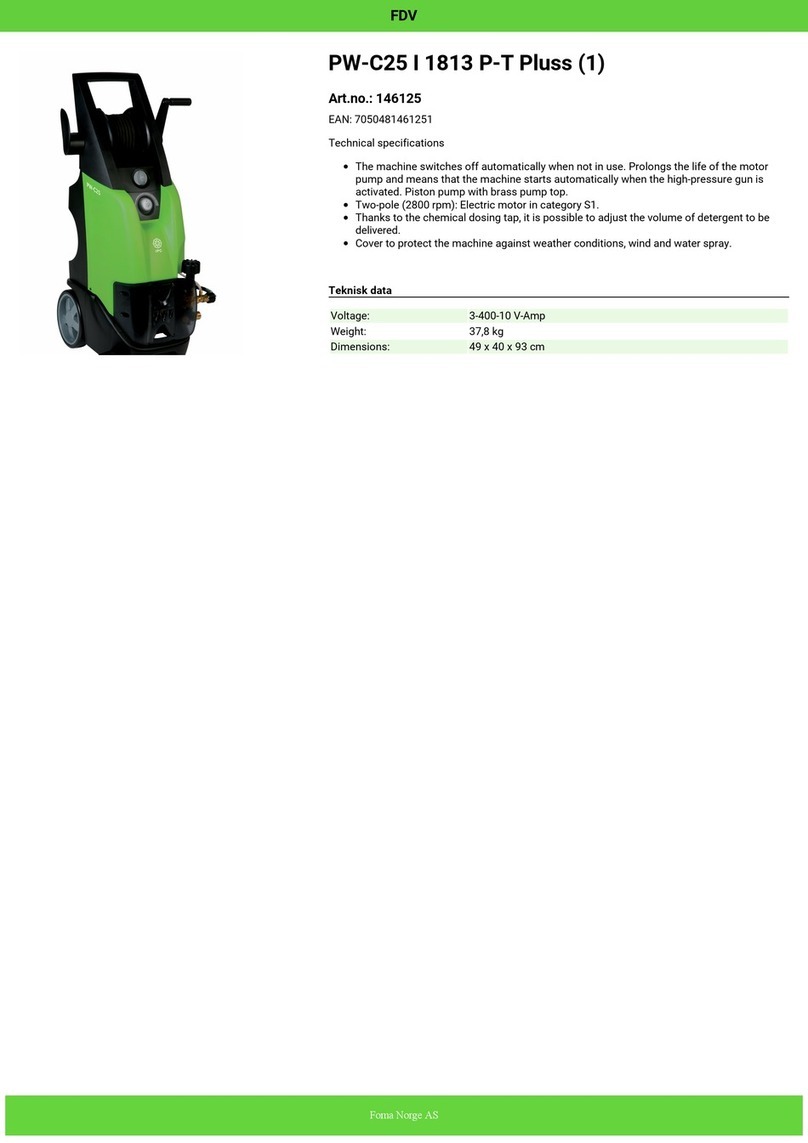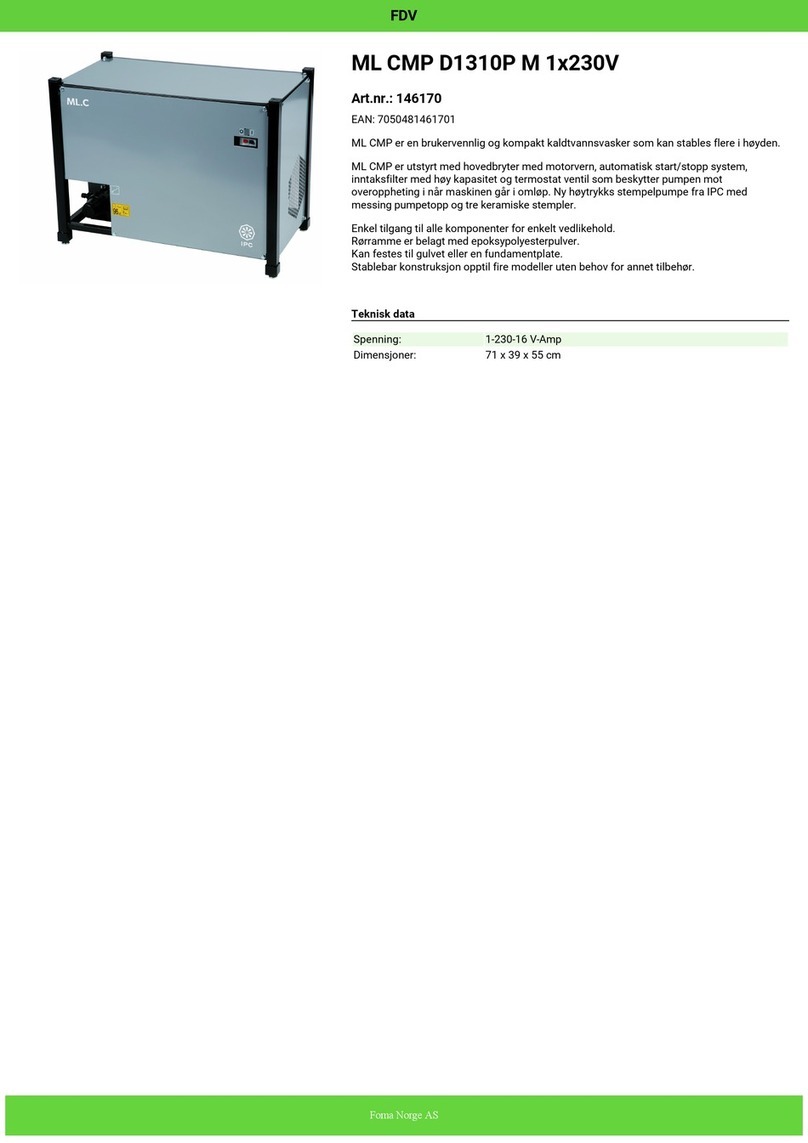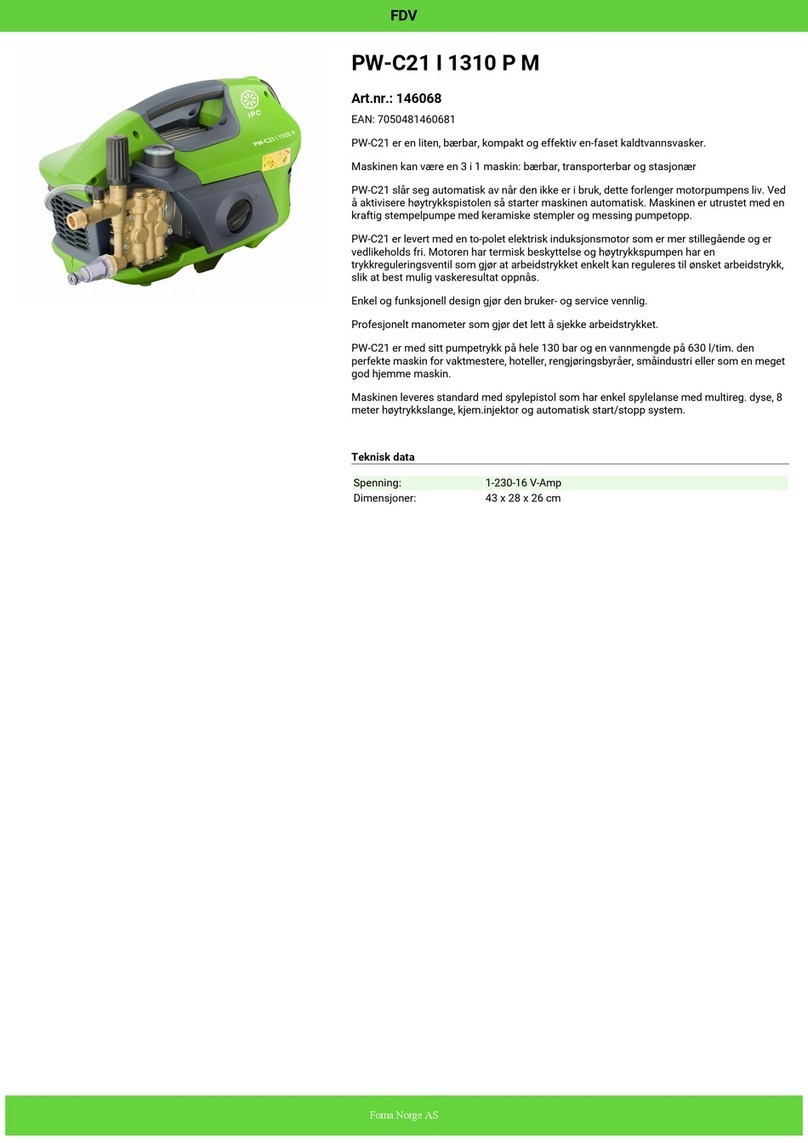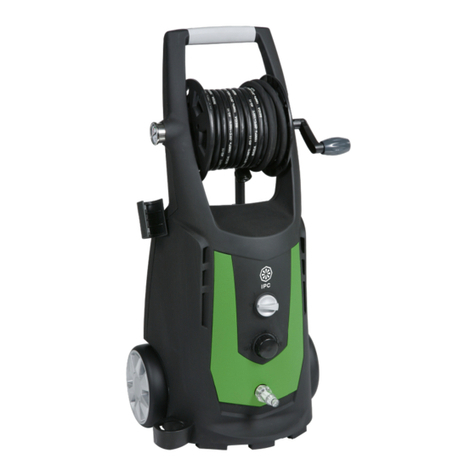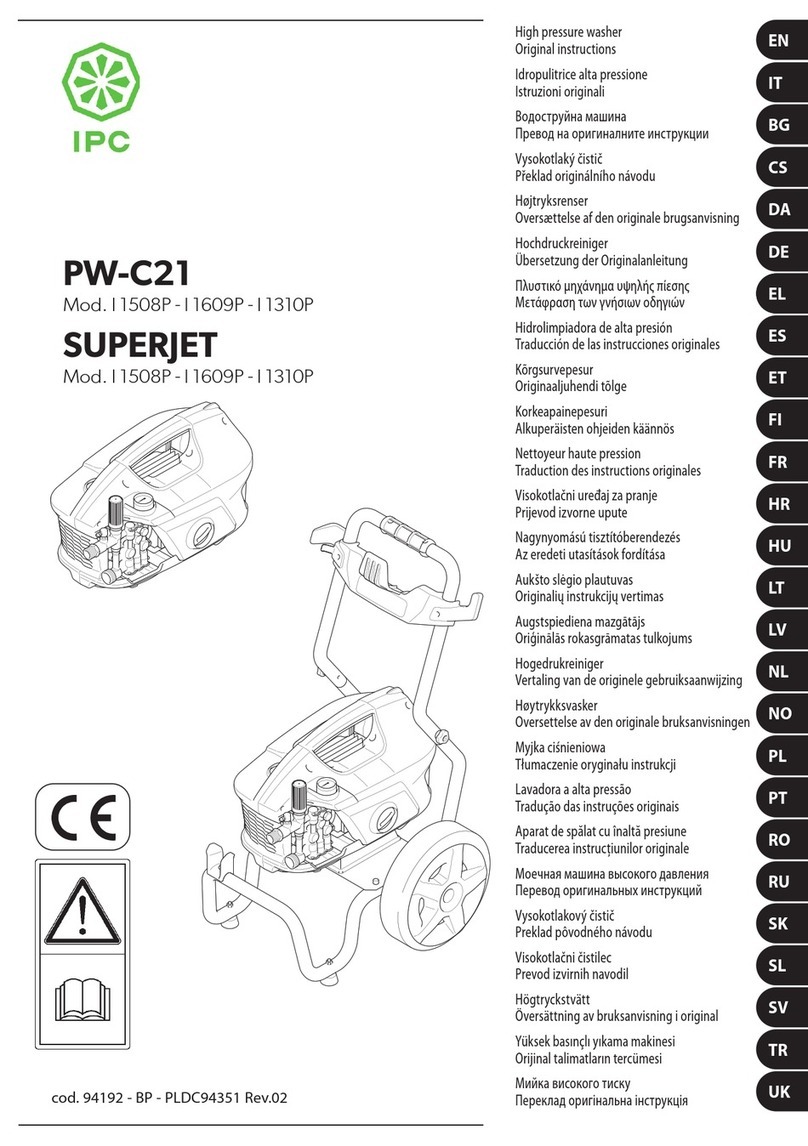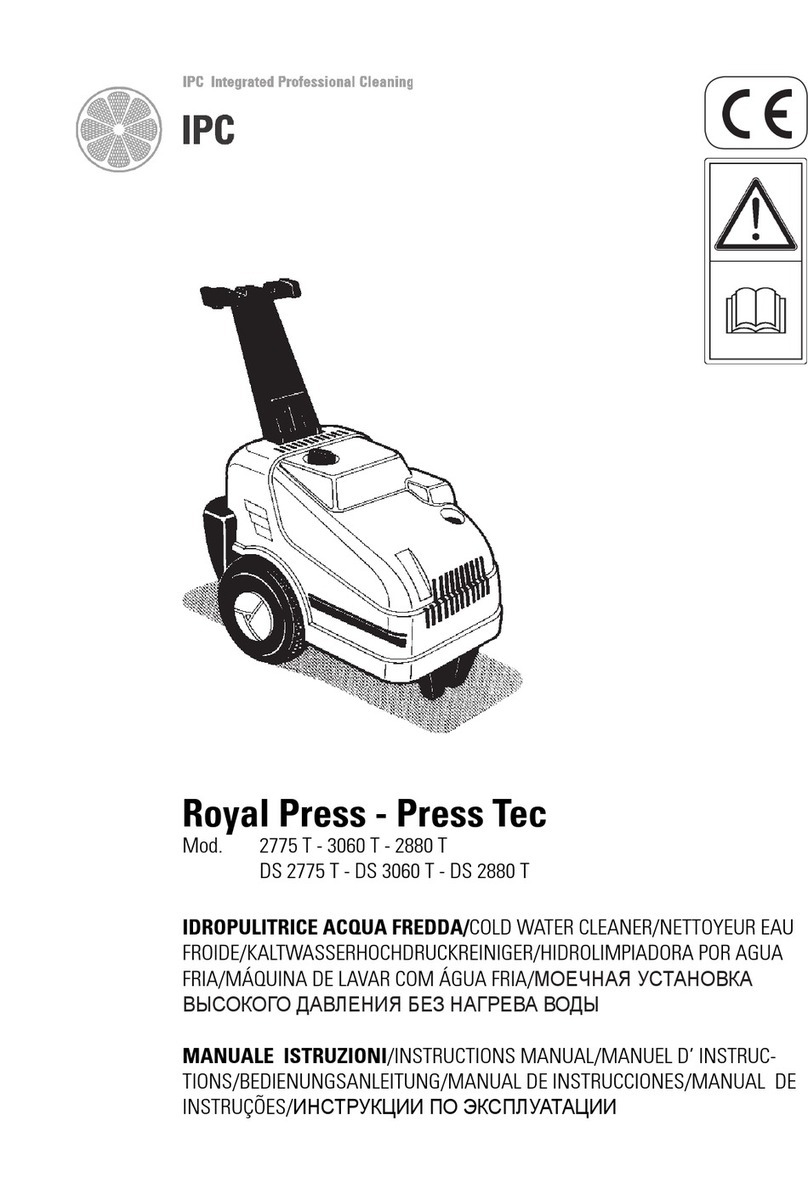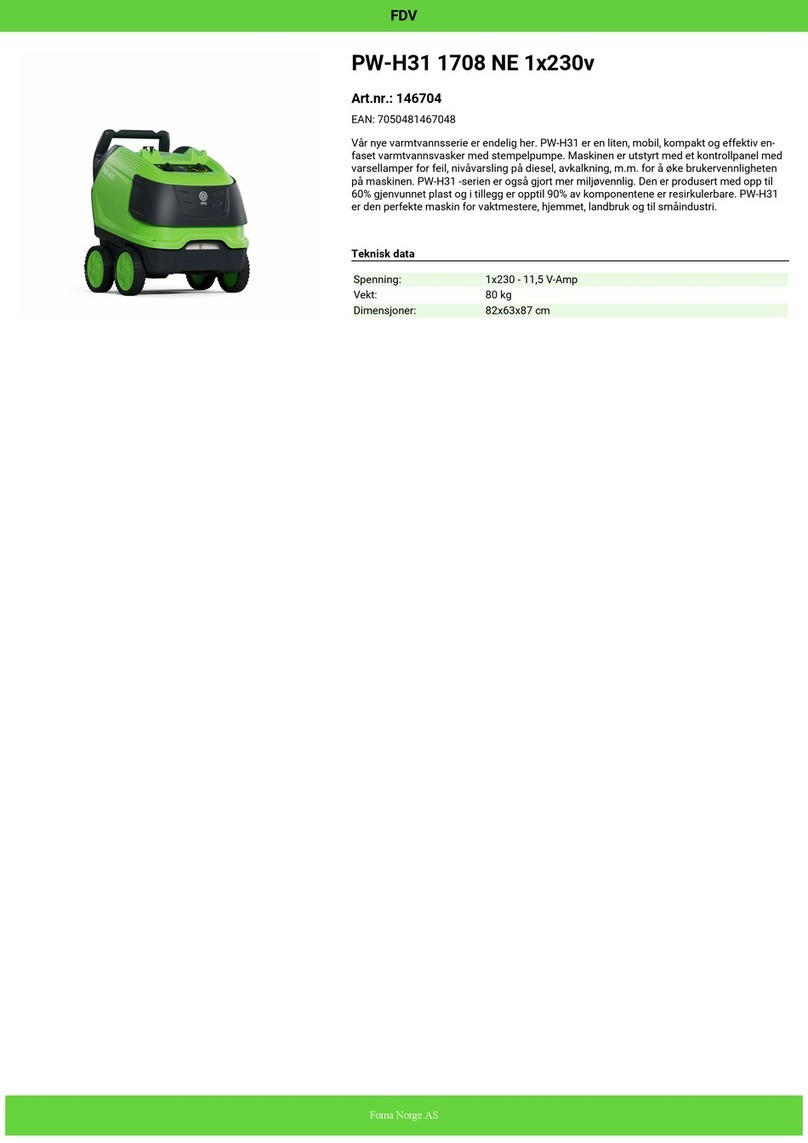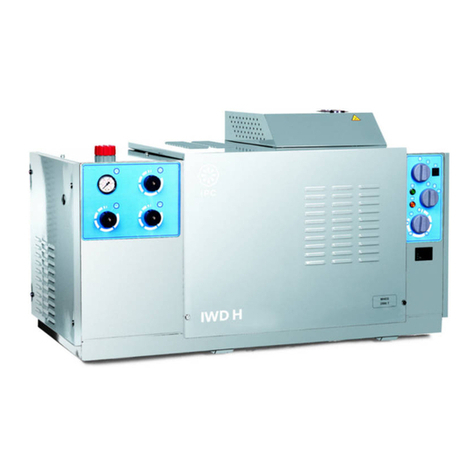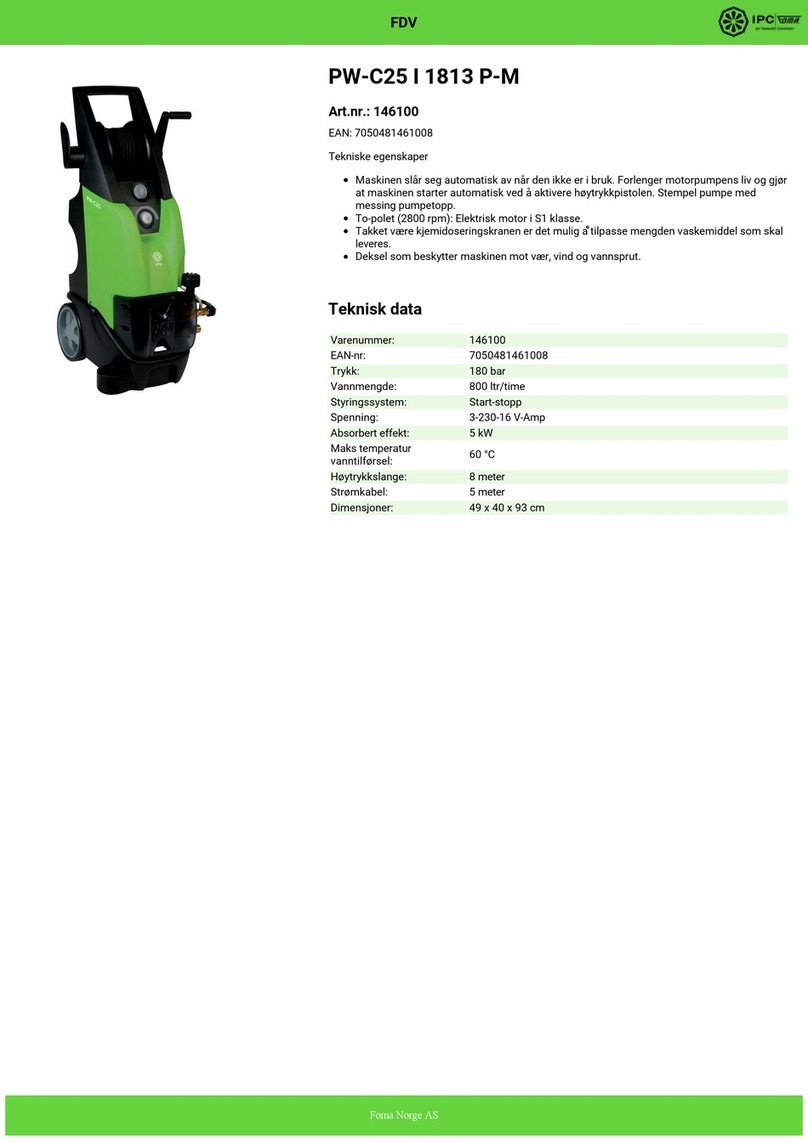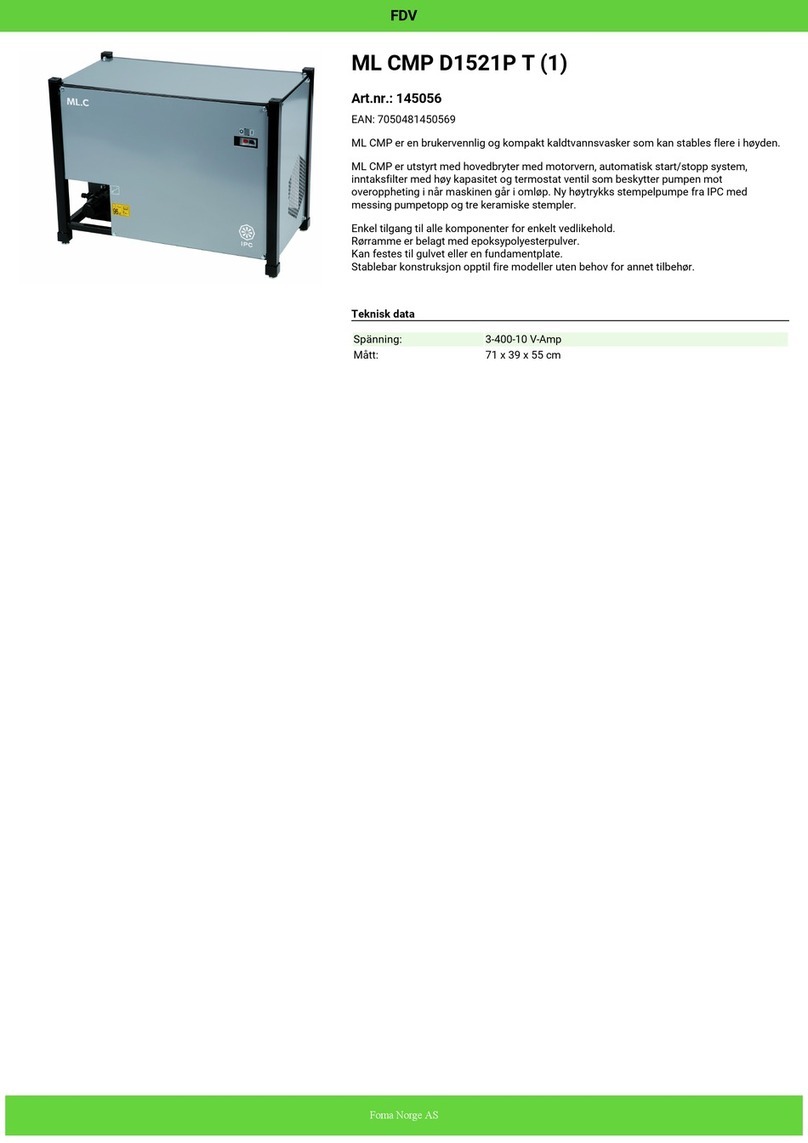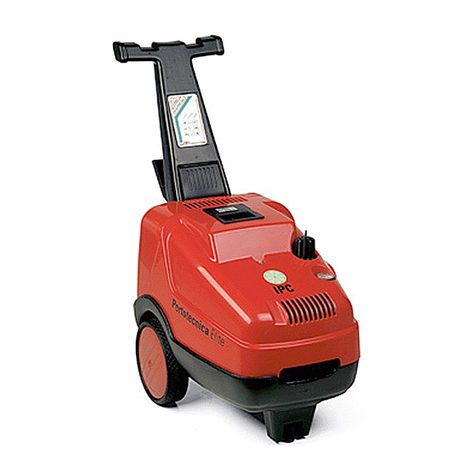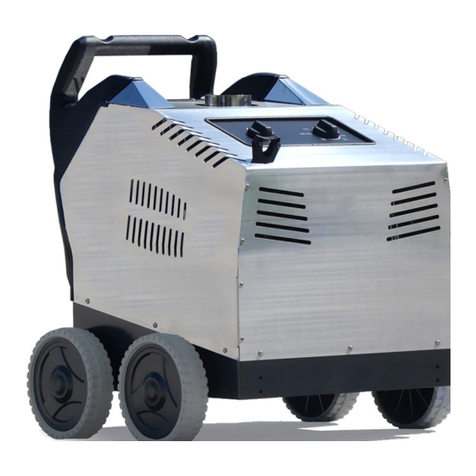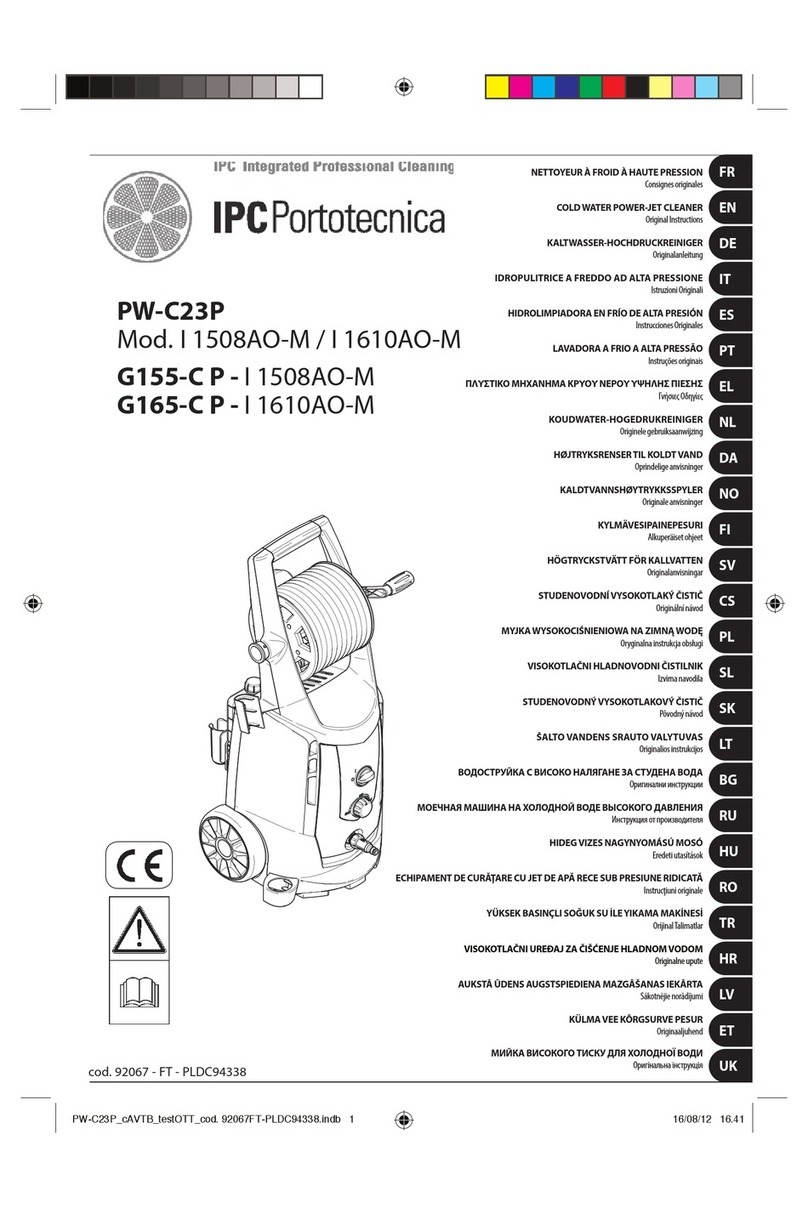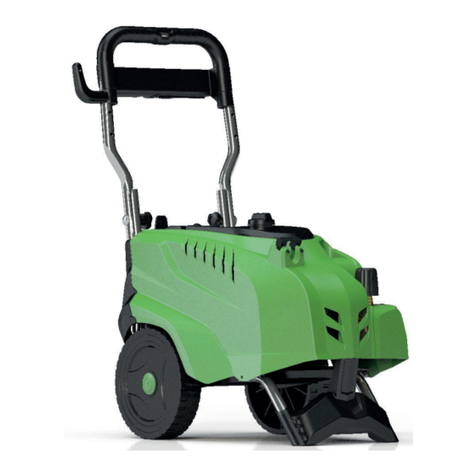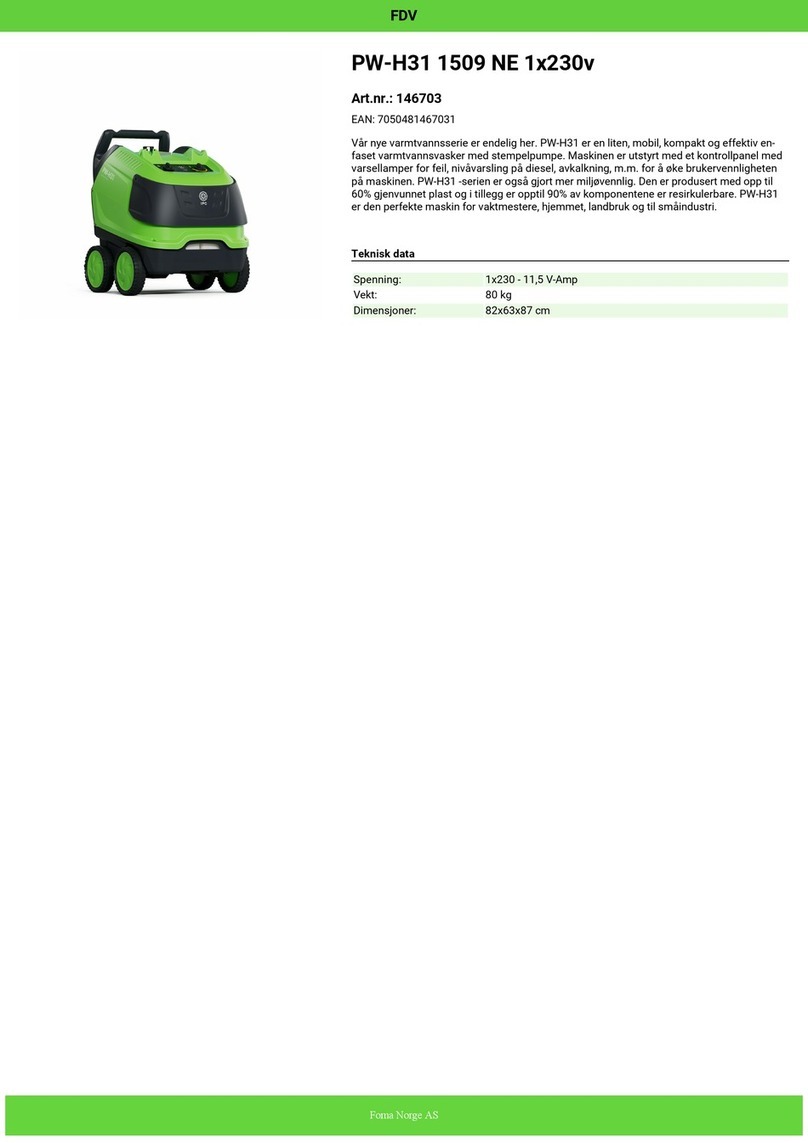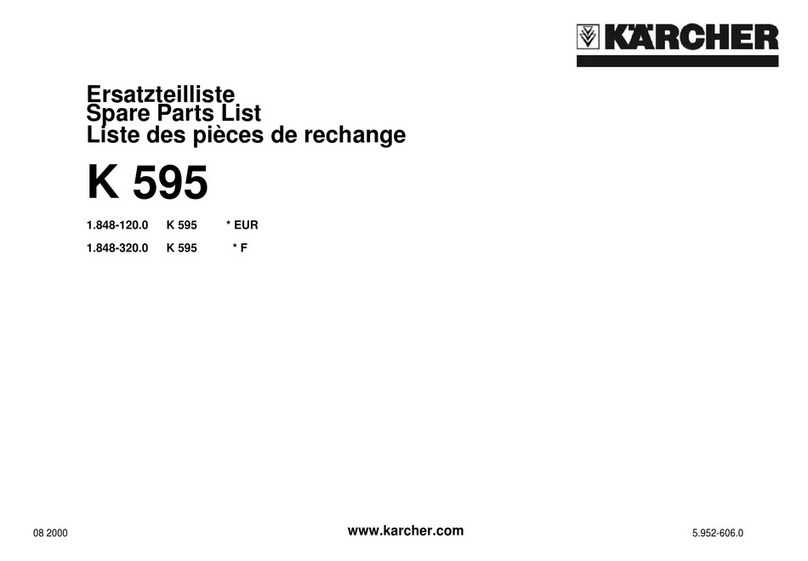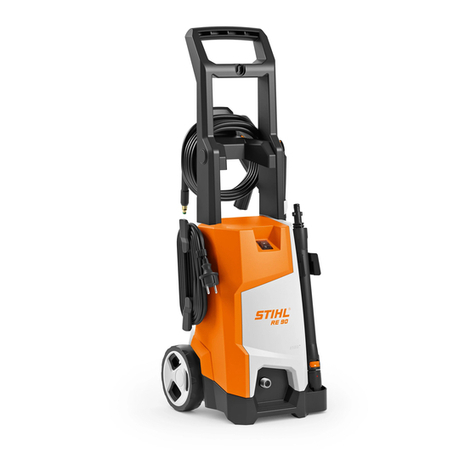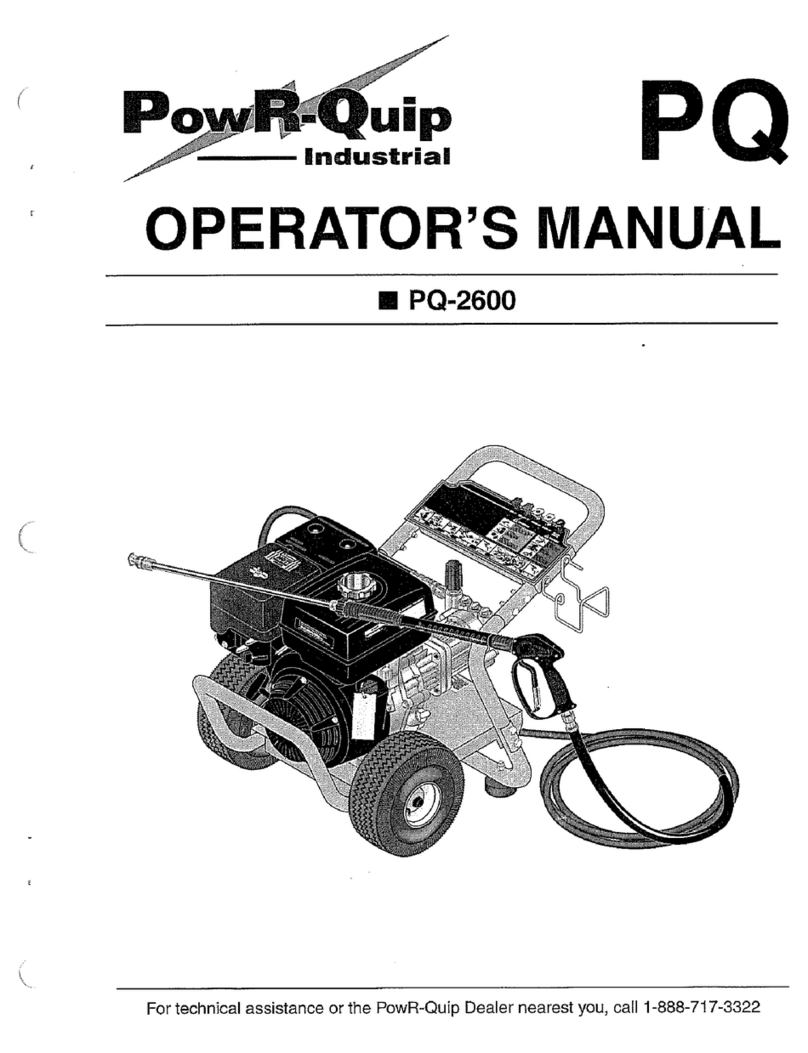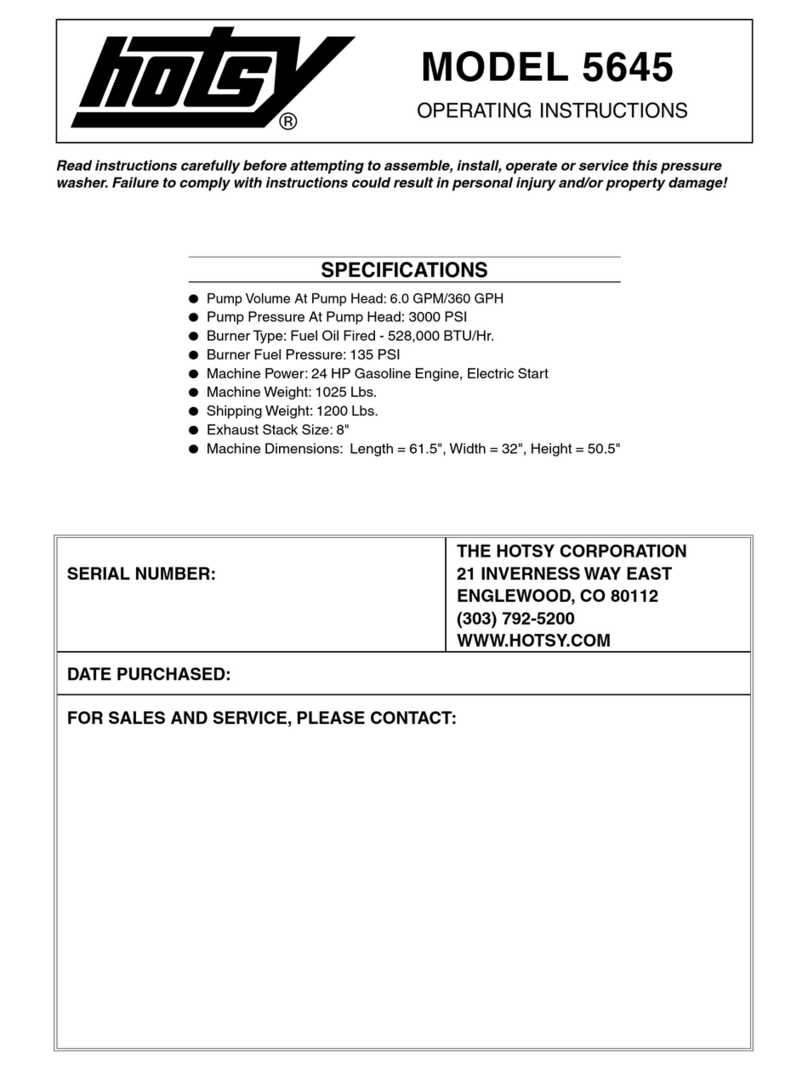Pag. 5
Service Manual
INDEX
Topics
1. The machine doesn’t starts Page
1a No electrical connection 7
1b No electrical supply to the electric motor or
motor thermal sensor overload intervened or burnt fuses 7
1c The micro-switch of bypass valve not working
(only for machine with total stop system)
12
1d Contactor not working (on versions three phase or P4) 13
2. No water jet at the lance nozzle Page
2a Bad or missing water feeding connection 14
2b Inlet water filter clogged 14
2c Air intake from the water feeding circuit 15
2d Pump head valves ceased 15
2e High pressure nozzle clogged 16
3. No pressure to the lance Page
3a Defective water feeding connection 17
3b Inlet water filter clogged 17
3c Air intake from the water feeding circuit 18
3d Pump head valves ceased or worn 18
3e Lance nozzle set in low pressure mode (detergent mode) 19
3f High pressure nozzle worn or deformed 19
3g Pressure adjusting valve setting at minimum position 20
3h Seat of pressure adjusting valve damaged 20
3i Pump gaskets worn or water leaks from the pump head 23
Ip Cleaning S.p.A.
Viale Treviso, 63 – 30026 Summaga di Portogruaro – VENICE – ITALY
Tel. +39 0421 205511 (r.a.) – Fax +39 0421 204227
Internet address: www.ipcportotecnica.com
